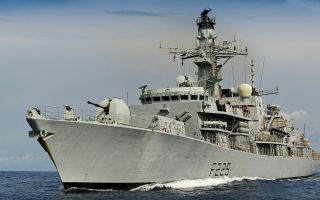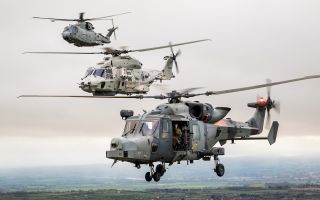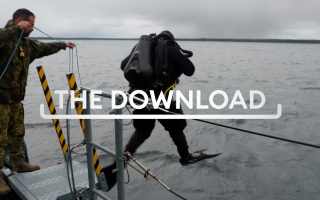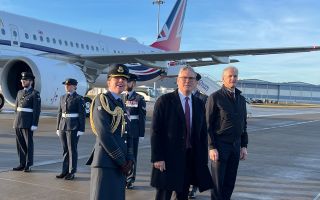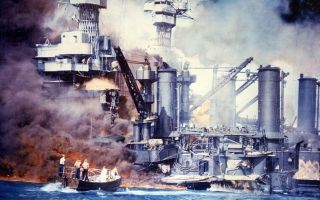Expert warns Ukraine must show it can fight in a Western style to find a breakthrough
Ukraine's ability to fight like a Western military will be tested within the next six weeks, according to a defence expert, who says there is "no sign of cracking" within the Russian forces as Ukraine pushes on with a counter-offensive.
Professor Michael Clarke – a former head of defence think tank The Royal United Services Institute – told Forces News that the real "acid test" over whether Ukraine will be able to make a decisive breakthrough will come within weeks, into next month, if Ukrainian forces can demonstrate that they have learned from their training to fight like a Western army, using tactics superior to the Russians.
Prof Clarke said the test for Ukraine is to show that they can put all the kit and training they have received into action.
He said: "One of the things that will be tested in this offensive, is how much they have been able to absorb those Western doctrinal issues, particularly in running combined arms operations.
"We haven't seen it yet; we will see it, I'm sure, in the next month or six weeks. We'll see the beginning of a real combined arms operation.
"That will be the acid test as to whether the Ukrainians can fight this war in a Western style, which we know is superior to Russian tactics, both in terms of soldier morale, command, equipment and integration. It's superior in every way.”
He said it could take six weeks for Ukrainian forces to reach the main Russian defence lines.
Prof Clarke added: "In a sense, we're still seeing the preliminary rounds of this contest while Ukraine is trying to probe across the battlefront to look for their best avenues of major attack, and I don't think we’ll see those avenues opening up for maybe weeks, or a month or more, it'll take a little bit of time yet."
Analysis suggests the Ukrainians are focusing their attacks on three main points.
They are attacking eastwards on both flanks, around the strategically significant city of Bakhmut.
A second front has opened southwards from Velyka Novosilka, 20 miles from Vuhledar in western Donetsk.
Eighty miles to the west of that, south of Zaporizhzhia, the Ukrainians launched attacks around Orikiv.
They are thought to be pushing south towards Tokmak – an important railway junction and a Russian logistics hub.
The Russians have so far used their air assets sparingly, but the counter-offensive has seen Moscow push more aircraft and kamikaze drones into the fight.
Prof Clarke said: "Russian discipline so far has been quite good, there's no sign of cracking and there won't be any sign of cracking until the Ukrainians get into their third and fourth lines of defence which is where their strong defences are.
"What the Ukrainians will probably try to do is unbalance the Russians in some way – force them to fall back quickly and then create disorganisation, because that's when Russians tend to crack – once their fixed lines, their fixed defences are actually breached."
The Russians are taking high losses in men and equipment, including another senior officer.
The latest intelligence update from the Ministry of Defence (MOD) said General-Major Sergei Goryachev was "almost certainly" killed in a strike on a command post on or around Monday 12 June, in the south of Ukraine.
The MOD said there is a "realistic possibility" he was the acting commander of 35th Combined Arms Army (35 CAA) at the time of his death.
His death, Prof Clarke said, "is the latest of at least eight generals that we know of and possibly 15 by some counts that may have been killed in this, one way or another".
"That is fairly astonishing, and it reflects two things. One is that the Ukrainians have now got equipment that can strike so far behind the lines that it’s getting in the rear area headquarters, not just forward headquarters.
"Secondly, that Russian generals are having to come quite close to the frontlines because of the inflexibility of the way the Russian command system works.
"When things are going wrong, a general goes right to the front to kick backsides, literally to gear everybody up, to find out what's gone wrong because they don’t trust the reporting system up and down.
"Firstly, these people shouldn't be so far forward, secondly, they've come far forward enough to be struck by Himars, early on, and now by Storm Shadow. It's not a good look when a country, an army loses a good handful of generals.
"They don't just lose the generals, they lose the planning and the staff and the momentum which they may have created."
Professor Clarke's assessment suggests that Ukraine's counter-offensive is slow and steady and could take weeks or even months.
However, he said, the Russians are conducting a very good static defence, using loitering munitions to great effect.
Maps of the region outlining hundreds of Russian defences also show the scale of the challenge that Ukraine faces as its forces continue to probe to search for a weakness in Russian fortifications to find a breakthrough it hopes will change the course of the war.

